Hot Melt Adhesives in Manufacturing: A Complete Technical & Application Guide
I. Introduction: Why Hot Melt Adhesives Are Reshaping Manufacturing Processes

In today’s highly competitive manufacturing environment, every second and cent counts. Whether you're an engineer responsible for product design, a plant manager optimizing throughput, or a procurement lead looking to standardize materials across production lines; one factor often makes a bigger impact than expected: the bonding method you choose.
Over the past decade, bonding technology has evolved rapidly, and with it, so have the expectations for performance, speed, and versatility. Where rivets, screws, tapes, and liquid adhesives once dominated, modern manufacturers are turning to hot melt adhesives as a cleaner, faster, and often more reliable alternative.
Hot melt adhesives have become a key enabler of leaner production; replacing mechanical fasteners, eliminating cure time, and providing strong, long-lasting bonds across a wide variety of substrates. From carton sealing in high-speed packaging lines to interior trim bonding in automotive assembly and even electronic potting, these adhesives are proving themselves indispensable across virtually every sector of manufacturing.
At STUK Solutions, we work directly with production teams across Canada every day. As a verified 3M™ distributor, we naturally lean toward their adhesive systems in many of our recommendations; not just because we represent the brand, but because we’ve consistently seen their products deliver reliable, measurable results in demanding industrial environments. While this guide highlights 3M solutions, our goal isn’t just to promote them; it’s to share real-world insights, application-specific best practices, and data-backed guidance that help manufacturers make smarter, process-driven bonding decisions.
This article is for engineers, plant operators, OEMs, and buyers looking to understand not only what hot melt adhesives are; but how to leverage them to gain a real, measurable advantage on the production floor. Whether you're evaluating a process change, upgrading equipment, or troubleshooting inconsistent bonds, this guide is designed to help.
Let’s start by breaking down what makes hot melt adhesives unique; and why they’re quickly becoming the go-to choice for modern assembly.
II. What Are Hot Melt Adhesives?
At a basic level, hot melt adhesives (HMAs) are thermoplastic bonding agents that are solid at room temperature, liquefy when heated, and quickly re-solidify as they cool; forming an instant bond between surfaces. Unlike liquid adhesives that require curing or drying time, hot melts set rapidly through simple physical change, not chemical reaction. This makes them ideal for high-speed manufacturing environments where throughput and efficiency matter.
The Chemistry Behind the Stick

Hot melt adhesives aren’t one-size-fits-all; they’re engineered using specific base polymers to meet the demands of different substrates and environmental conditions. Here are the most common formulations found in industrial use:
-
EVA (Ethylene Vinyl Acetate):
The most widely used hot melt base, offering a balanced profile of flexibility, adhesion, and cost-efficiency. Great for packaging, woodworking, and general product assembly. -
Polyolefin (PO):
Offers enhanced thermal resistance and adhesion to low surface energy (LSE) materials like polyethylene and polypropylene. Common in automotive and consumer goods manufacturing. -
Polyamide (PA):
Known for superior strength, fuel/oil resistance, and excellent performance in harsh environments. Often used in electronics, metal bonding, and specialty applications. -
Polyurethane (PUR) Hot Melts:
These reactive hot melts offer exceptionally strong, elastic bonds. They cure over time with atmospheric moisture, providing long-term durability and flexibility. -
Styrenic Block Copolymers (SBC):
Typically used in pressure-sensitive hot melts where tack and peel properties are prioritized; such as in labeling or temporary bonds. -
Reactive Hot Melts (e.g., PUR):
These undergo a secondary chemical reaction after cooling, forming a crosslinked network. The result is a bond that rivals epoxies in strength, while still being fast to apply.
The Science of the Bond
Hot melt adhesives work through a combination of viscosity, open time, set time, and crystallization behavior:
-
Viscosity:
Determines how the adhesive flows during application. Lower viscosity ensures better wet-out and penetration into surface textures. -
Open Time:
The window during which the adhesive remains tacky and repositionable after application. Open time ranges from a few seconds to over a minute, depending on the formulation. -
Set Time:
How quickly the bond reaches handling strength after pressure is applied. Hot melts are typically fast-setting, which is why they’re favored on high-speed production lines. -
Crystallization (or cooling phase):
The rapid solidification of the adhesive creates a physical bond as the polymer cools. No curing or evaporation is needed.
Why Choose Hot Melt Over Other Adhesive Types?
Compared to traditional adhesive technologies, hot melts offer some distinct operational advantages:
|
Adhesive Type |
Set/Cure Time |
VOCs |
Bond Strength |
Ease of Use |
Cost Efficiency |
|
Hot Melt |
Seconds |
None |
High (on most materials) |
Easy (automatable) |
High |
|
Solvent-Based |
Minutes to hours |
High |
Moderate–High |
Requires ventilation |
Moderate |
|
Water-Based |
Minutes |
Low |
Moderate |
Can require drying equipment |
Low–Moderate |
|
Reactive (epoxies, PURs) |
Hours |
Variable |
Very High |
Complex application |
Low (high cost) |
In short, hot melt adhesives strike the perfect balance between performance, speed, and versatility; making them a staple in industries that value lean manufacturing and scalable production. And with a wide variety of chemistries available, manufacturers can select a formulation that’s purpose-built for their materials and environment.
Looking for the best adhesive for your process?
Use our Hot Melt Adhesive Selection Matrix (PDF) to match your materials, application speed, temperature, and equipment to the right 3M™ adhesive.
In the next section, we’ll explore how this plays out in practice; looking at the real-world benefits hot melt adhesives bring to the factory floor.
III. Technical Benefits of Hot Melt Adhesives in Manufacturing
The growing popularity of hot melt adhesives in industrial settings isn’t just about speed; it’s about delivering measurable advantages across production, materials, and product performance. When properly matched to the application, hot melt adhesives offer a unique combination of operational efficiency, versatility, and long-term bond integrity. Let’s break down the key technical benefits that make them an increasingly valuable tool for manufacturers.
A. Fast Bonding, Faster Production

One of the biggest drivers behind the shift to hot melts is their speed of application and bond formation. Unlike reactive adhesives that require curing, or water- and solvent-based adhesives that need to dry, hot melts bond almost instantly as they cool. This means production lines can move faster, and parts can be handled or packaged immediately after bonding.
The balance between open time and set time is another important consideration. Open time refers to how long the adhesive remains workable after application; allowing for positioning, alignment, or multiple contact points. Set time is how quickly the bond reaches handling strength after the substrates are pressed together.
- Short open/fast set adhesives (e.g., 3M™ 3762) are ideal for automated high-speed packaging lines where timing is consistent and precise.
- Longer open time adhesives (e.g., 3M™ 3792) are better for manual operations, woodworking, or assemblies requiring repositioning.
This flexibility in timing allows manufacturers to optimize hot melt use across both manual and automated workflows.
B. Versatile Substrate Compatibility

Hot melt adhesives bond well to a broad spectrum of materials, including:
- Wood and engineered wood products (MDF, particleboard)
- Metals (coated or uncoated)
- Foams and fabrics
- Corrugated fiberboard and paperboard
- Vinyl, rubber, and many plastics; including low surface energy (LSE) materials like polypropylene (PP) and polyethylene (PE)
Bonding to LSE materials often presents a challenge with traditional adhesives, but specialty hot melts; particularly polyolefin- and polyurethane-based formulations; can form strong, reliable bonds without additional primers.
That said, surface energy matters. Materials like PP and HDPE have low surface energy, meaning adhesives don’t “wet out” easily. In these cases, pretreatment methods like corona discharge, plasma treatment, or flame treatment can increase surface energy and improve adhesion performance, especially when using general-purpose formulations.
C. Strong Bonds with Minimal Material Usage

Hot melt adhesives aren’t just fast; they’re efficient. Thanks to high solids content and low viscosity during application, they spread thinly and uniformly, minimizing material usage while still achieving excellent coverage and bond strength.
Many industrial-grade hot melts deliver:
- High shear strength – important for structural stability over time
- High peel resistance – critical for dynamic applications or materials under stress
- Excellent creep resistance – preventing adhesive “slippage” under load
When applied with precision dispensers or automated systems, hot melt beads or patterns can be optimized for weight, shape, and location; translating into less waste, cleaner application, and lower cost per unit.
D. Heat, Chemical, and Moisture Resistance (in Select Formulas)

While standard EVA-based hot melts are ideal for general-purpose use, formulations like polyamide and polyurethane are engineered for demanding environments:
- Heat resistance up to 300°F (149°C) (e.g., 3M™ 3779 or 3797)
- Fuel and oil resistance for automotive or electronics applications (e.g., 3M™ 3789)
- Moisture and humidity resistance for wood, construction, or outdoor products
These specialty adhesives make hot melt technology viable in sectors where extreme conditions, chemical exposure, or thermal cycling would typically eliminate other adhesive types.
Together, these benefits make hot melt adhesives more than just a convenience; they’re a strategic tool for manufacturers aiming to reduce waste, speed up assembly, and deliver stronger, longer-lasting products. In the next section, we’ll dive into the specific lineup of 3M™ hot melt adhesives and how each formula is tailored to meet these diverse industrial needs.
IV. 3M™ Hot Melt Adhesives: Portfolio Overview and Strategic Advantages
When it comes to industrial adhesives, 3M™ has built a global reputation for engineering precision, product consistency, and system-level innovation. Their hot melt adhesive line is no exception. Rather than offering generic, one-size-fits-all solutions, 3M develops specialized formulations tailored to specific bonding challenges; backed by rigorous performance testing and seamless integration with their own application tools.
A. What Sets 3M Apart
At first glance, hot melt adhesives might seem straightforward: heat, apply, bond. But 3M has taken that basic concept and engineered a comprehensive ecosystem that goes far beyond conventional glue sticks.
1. Application-Driven Formulations
3M’s product development isn’t driven by chemistry alone; it’s based on solving real manufacturing problems. Whether it’s creating bonds that hold up to fuel and oil, survive extreme heat cycling, or bond difficult substrates like polypropylene, each adhesive is designed with a specific performance profile in mind.
2. Integrated Systems: Adhesive + Applicator
Unlike many competitors that only sell adhesive, 3M offers full system integration. Their adhesives are paired with purpose-built applicators (like the LT, TC, EC, and PG II series), allowing users to maintain precise control over temperature, flow rate, bead size, and spray patterns. This kind of system-level compatibility ensures reliable, repeatable results; especially important in high-volume manufacturing environments.
3. Innovation Across Categories
3M has pioneered hot melt solutions in areas where other brands offer limited support:
- Low-temp adhesives (e.g., 3762LM, 3792LM) that reduce energy usage and prevent substrate damage
- Sprayable hot melts (e.g., 6111HT) that cover wide areas quickly with uniform adhesive layers
- High-performance polyamide adhesives (e.g., 3789, 3779) for resistance to oil, fuel, and heat
Together, these innovations give manufacturers a robust toolbox for addressing complex bonding challenges; without compromising speed or scalability.
B. Overview of Key 3M™ Hot Melt Adhesive Product Lines
To help navigate the 3M hot melt catalog, here’s a technical breakdown of their most widely used formulations. These products cover a wide range of manufacturing sectors, including packaging, automotive, electronics, woodworking, and upholstery.
|
EVA |
Packaging, carton sealing |
~15 sec |
~10 sec |
~150°F |
Fast set, high tack, LM version for heat-sensitive uses |
|
|
EVA |
Wood, fabric, foam |
~50 sec |
~30 sec |
~175°F |
Clear bond lines, good flexibility, low-temp variant available |
|
|
Polyamide |
Fuel/oil resistance, metal bonding |
~60 sec |
~30 sec |
250°F+ |
Strong bonds to metals, resistant to plasticizers and oils |
|
|
Polyolefin |
Automotive trim, LSE plastics |
~25 sec |
~15 sec |
~225°F |
Bonds well to PP, PE, and other low surface energy plastics |
|
|
EVA/Polyolefin |
General purpose, light plastic parts |
~30 sec |
~20 sec |
~230°F |
Long open time for manual or large-surface assembly |
|
|
Sprayable |
Upholstery, wide surface lamination |
Varies |
Fast |
High |
Unique sprayable format for broad, even coverage |
|
|
Polyamide |
Electronics, high heat applications |
~25 sec |
Fast |
~300°F |
Excellent for potting and electronic assembly under thermal stress |
Each of these adhesives is engineered not only for strength and durability, but also for process compatibility; whether you're running high-speed lines, handling delicate materials, or working in extreme environments.
In the following section, we’ll take these adhesives out of the datasheet and into the real world; showcasing how manufacturers across different industries are using them to solve specific bonding challenges.
V. Industry-Specific Use Cases for Hot Melt Adhesives
Hot melt adhesives aren’t just plug-and-play materials; they’re selected, tested, and fine-tuned for specific roles within demanding manufacturing environments. Below are detailed, realistic examples of how manufacturers across industries are solving real production challenges using 3M™ hot melt technologies.
A. Packaging: High-Speed Tray Forming and Sealing in Cold Chain Environments

Operation Type: Beverage and dairy processing facility
Line Setup: Six Form-Fill-Seal (FFS) systems, outputting ~6,000 cartons per hour
Packaging Materials: High-recycled content corrugated with PE-coated interiors
Environmental Factors: 4°C packaging environment, intermittent surface condensation
Challenge:
The facility was experiencing box failures during cold storage and shipment due to poor bonding on coated and moist surfaces. Water-based adhesives lacked tack in cold environments and created bottlenecks due to extended dry times. Previously trialed hot melt options charred quickly and clogged nozzles at lower application temperatures.
Solution:
The plant converted to 3M™ Hot Melt Adhesive 3762LM, which offered excellent adhesion to coated board, recycled kraft liners, and damp surfaces. Its low-melt formulation (applied at ~250°F) reduced box warping, minimized adhesive stringing, and allowed faster start-up on Monday morning shifts with fewer blockages.
Impact:
- Reduced downtime by 28% due to fewer maintenance stoppages
- Bond failure rate during drop testing fell from 4.1% to 0.6%
- Achieved full seal integrity under simulated transport and refrigeration conditions
B. Automotive: Interior Trim and Acoustic Panel Lamination for Passenger Vehicles

Operation Type: Tier 1 supplier of door panels and B-pillar trim
Line Setup: 3 robotic workcells with IR preheat, pressure rollers, 30-second cycle
Materials: PP base shell, PET acoustic fleece, vinyl-wrapped foam
Challenge:
Bonding multiple materials with widely different expansion rates, plus harsh temperature cycling (−35°C to +95°C) created delamination during end-of-line vibration testing. Standard adhesives failed either at the vinyl/foam interface or at the polyolefin base.
Solution:
3M™ 3748 was introduced due to its polyolefin base, which forms high-strength bonds directly to LSE plastics without primers. With a 25-second open time, it integrated seamlessly into the robotic dispense cycle, allowing full wrap-and-press lamination. The adhesive also passed OEM-required SAE J400 temperature cycling and FMVSS 302 flame spread testing.
Impact:
- Reduced rework at quality check by 70%
- Eliminated need for primer, saving over $18,000/year in material and prep labor
- Passed 100,000-mile durability simulation without delamination
C. Electronics: Component Potting and Strain Relief in Harsh Outdoor Conditions

Operation Type: Contract manufacturer producing LED streetlight drivers
Assembly Line: Manual potting + wire tacking for 12V, 24V, and 48V DC modules
Requirements: UL 94 V-0 flame rating, -40°C to +120°C temp range, dielectric stability
Challenge:
The client’s prior epoxy potting compound required 12 hours of cure time under heat, creating backlog and space constraints in WIP. They also struggled to maintain clean, bubble-free fills in small housings (2" x 3") with densely packed PCBs.
Solution:
3M™ Hot Melt Adhesive 3797 was introduced. A low-viscosity polyamide adhesive, it flows easily into complex geometries, sets rapidly for immediate handling, and provides moisture sealing and mechanical protection. The thermoplastic bond flexes under temperature changes, avoiding micro-cracking.
Impact:
- Reduced potting cycle time from 12 hours to 8 minutes
- Improved first-pass yield by 23% (due to fewer air inclusions and less shrinkage)
- UL 746C and 94 V-0 approved material, supporting regulatory compliance
D. Furniture and Woodworking: Upholstery and Foam Bonding in Ergonomic Seating

Operation Type: Commercial seating manufacturer (lecture halls, airports, auditoriums)
Line Setup: Manual foam lamination + automated fabric wrapping on rotary table lines
Materials: High-resilience foam, MDF bases, recycled PET felt, faux leather
Challenge:
The production team struggled to find a solution that allowed enough open time for precise alignment of upholstery while also setting quickly enough for high throughput. Liquid glue created overspray and edge seepage, damaging fabric and requiring rework.
Solution:
3M™ Hot Melt Adhesive 3792LM proved ideal due to its low application temperature (~250°F) and 50-second open time, allowing the operator to stretch, smooth, and place the upholstery before the adhesive set. The clear formulation ensured no visible bleed-through, and the foam was not degraded by heat.
Impact:
- Reduced upholstering time per unit by 22%
- Rework due to edge distortion dropped from 12% to 2%
- Operators reported easier handling and better ergonomic flow during manual assembly
E. POP Displays and General Product Assembly: Acrylic Bonding and Structural Foam Inserts

Operation Type: Fabricator producing modular POP units for cosmetics and tech retailers
Workflows: CNC-cut acrylic, CNC-milled foam blocks, laminated MDF and sintra panels
Constraints: 3–5 day turnarounds, tight tolerance joints, clean visual presentation
Challenge:
The shop needed an adhesive that could bond a variety of substrates without bleeding, bubbling, or visible seams, while keeping assembly times under 2 minutes per unit. Spray adhesives introduced overspray and misalignment, and double-sided tapes failed during transport.
Solution:
3M™ Hot Melt Adhesive 3738 delivered fast tack, a moderate open time (~45 sec), and high initial bond strength; ideal for one-shot assembly with jigs. Its compatibility with plastics, foams, and wood-based composites made it perfect for bonding mixed-material subassemblies.
Impact:
- Reduced average unit assembly time by 35%
- Achieved consistent edge bonding with less cleanup or smearing
- Increased shipping durability; no detachment issues reported after national rollouts
These case studies aren’t theoretical; they reflect the kinds of problems manufacturers bring to us every day at STUK Solutions. When paired with the right tool and process, 3M™ hot melt adhesives not only outperform generic options, they transform workflows.
In the next section, we’ll compare these solutions against other brands on the market; so you can see how 3M stacks up from a technical and operational perspective.
VI. Comparing 3M to Other Leading Brands
With a range of adhesive manufacturers on the market, it’s easy to assume that most hot melt options are interchangeable. But when it comes to industrial performance, specialty formulations, equipment compatibility, and supply chain reliability; not all brands are created equal.
Here’s a clear breakdown of how 3M™ hot melt adhesives compare to other well-known brands in the industry, based on what actually matters in a production setting:
|
Brand |
Bond Strength |
Specialty Options |
Temp Resistance |
Canadian Distribution |
Equipment Ecosystem |
|
3M™ |
Very High (select grades exceed 250°F) |
Sprayable, low-temp, LSE plastics, fuel/oil-resistant |
Up to 300°F |
Widely available via verified distributors (e.g. STUK) |
Fully integrated 3M™ gun lineup (LT, PG II, EC, etc.) |
|
Henkel Technomelt |
Moderate to High |
Primarily packaging; limited LSE or automotive options |
~230°F |
Mostly sold through B2B supply channels; limited retail presence |
Generic tools required; no integrated solution |
|
Bostik Thermogrip |
Moderate |
Offers some PUR and woodworking options |
~220°F |
Limited stocking in Canada; some niche distributors |
No branded applicators or matched systems |
|
Glue Dots (Low-Temp HM) |
Low |
Designed for lightweight, craft-scale applications |
~160°F |
Readily available at craft/hobby retail; not industrial-grade |
Manual use only; no hot melt guns or automation |
Key Differentiators: Why 3M Leads the Pack
1. Engineered for Industry
While other brands focus heavily on basic packaging or niche applications, 3M’s hot melt catalog is purpose-built for industrial bonding challenges; from high-speed carton sealing to heat-resistant automotive interiors, and even electronic component encapsulation. Where others offer “general-purpose” adhesives, 3M offers application-specific chemistry with full technical support behind it.
2. Full-System Compatibility
One of 3M’s most significant advantages is its closed-loop ecosystem. Their adhesives are designed to work seamlessly with 3M™ applicators; whether it’s a low-temp LT gun for delicate work, or a PG II pneumatic applicator for high-volume manufacturing. This compatibility ensures consistent output, optimal flow control, and reduced application errors, which third-party guns often can’t guarantee.
3. Availability and Logistics
In Canada, many alternative adhesives are available only through OEM-specific accounts or specialty industrial suppliers, which can complicate procurement; especially for growing shops or companies with decentralized purchasing. In contrast, 3M products are readily available through verified distributors like STUK Solutions, ensuring quick turnaround, local support, and access to volume pricing.
4. Specialty and Innovation Leadership
3M is one of the few manufacturers with truly specialized hot melts:
- Sprayable hot melts (e.g., 3M™ 6111HT) for wide-area lamination
- Low-temp adhesives (e.g., 3762LM, 3792LM) for heat-sensitive materials or reduced energy consumption
- Polyamide formulations (e.g., 3789, 3779) for high-heat, oil/fuel resistance, and electronics
These aren’t add-ons; they’re core parts of the 3M adhesive portfolio, and they often fill performance gaps that other brands simply don’t address.
Bottom Line

If you're bonding basic corrugated boxes at room temperature, most adhesive brands will probably get the job done. But if you're working in complex assemblies, dealing with difficult materials, or need a repeatable, production-ready solution, 3M is one of the few brands that can provide the adhesive, the equipment, and the support; all in one package.
And that’s not just marketing; it’s the difference between having a “glue that sticks” and having a bonding system that improves your entire production process.
In the next section, we’ll explore how to choose the right 3M hot melt adhesive for your exact application; with a framework that accounts for your materials, environment, and equipment.
VII. Choosing the Right Hot Melt Adhesive: Application Fit Matrix
Selecting the ideal hot melt adhesive isn’t just about picking a product off a shelf; it requires a detailed understanding of your application’s specific demands. By carefully considering factors such as the substrate, desired bond appearance, thermal conditions, and production process, you can optimize performance, reduce waste, and streamline your workflow. Here’s a closer look at the key considerations for choosing the right hot melt adhesive:

1. Substrate Type
Different materials require different bonding strategies.
- Wood, Foam, and Fabrics: Look for adhesives that offer flexibility and longer open times, ensuring proper positioning before the bond sets.
- Metals and Plastics (including low surface energy types like PP and PE): Choose formulations designed for strong adhesion and high chemical or temperature resistance; such as 3M’s polyolefin or polyamide-based options.
- Corrugated or Paper-Based Materials: Consider adhesives that deliver fast tack and reliable bonds even when the surfaces are lightly coated or slightly damp.
2. Bond Line Visibility
The aesthetic outcome of your bonded parts can be as important as the functional strength of the bond.
- Clear Bond Lines: When appearance is critical; such as in furniture or retail displays; opt for adhesives with a clear or nearly invisible bond line.
- Colored or Opaque Bonds: In certain industrial applications, a colored bond line is acceptable or even desirable if it signals a proper bond has been achieved.
3. Thermal Requirements
Your bonding solution needs to withstand the temperatures it will encounter in both production and end use.
- High-Temperature Resistance: For applications in automotive or electronics, choose adhesives that can endure elevated operating temperatures (up to 300°F for some 3M formulations).
- Low-Temperature Conditions: For industries like packaging in refrigerated or chilled environments, adhesives that maintain performance at low application temperatures are ideal.
4. Set/Open Time Needs
Your production speed and process control are directly tied to how quickly an adhesive sets and how long it remains workable.
- Short Set Time: Suitable for high-speed automated assembly where rapid build-up is essential.
- Extended Open Time: Critical for manual processes or when repositioning of the bonded parts is required to achieve a precise alignment.
5. Automation Compatibility
Modern production lines often require adhesives that integrate seamlessly into automated systems.
- Applicator Compatibility: Ensure the adhesive works with the available equipment, whether that’s a hot glue gun, spray system, or a robotic application tool.
- Consistency and Reliability: Automated systems demand adhesives that provide uniform bead consistency and predictable set times, minimizing variability and reducing downtime.
VIII. Application Best Practices
Choosing the right adhesive is only half the battle; how it’s applied is just as critical to performance and consistency. Even the best hot melt adhesive can fail if surface prep is poor, temperatures are off, or the equipment isn’t dialed in correctly. Below are best practices gathered from real-world manufacturing environments to help ensure your adhesive performs as expected from day one.
1. Surface Preparation: Clean Surfaces = Stronger Bonds
The quality of a bond is only as good as the cleanliness of the surfaces it joins. Even microscopic layers of dust, oil, or oxidation can prevent proper adhesive wet-out.
- Metal: Wipe with isopropyl alcohol or acetone to remove oils, machining fluids, and oxidation. For aluminum and other reactive metals, consider a quick abrasive or solvent wipe followed by an immediate bond to prevent re-oxidation.
- Plastics: Clean with a non-residue solvent like isopropyl alcohol. For LSE plastics like polypropylene or polyethylene, surface treatment (flame, plasma, or corona) may improve adhesion when using general-purpose adhesives. Otherwise, use a formulation designed specifically for LSE materials (e.g., 3M™ 3748).
- Wood & Fiberboard: Ensure surfaces are free of sawdust, resin buildup, and moisture. If bonding to MDF or particle board, note that dust and waxy coatings may interfere with bond strength.
2. Avoiding Stringing and Char Buildup
Stringing; those fine webs of adhesive that trail after the applicator; is one of the most common frustrations in hot melt application. It can lead to mess, inconsistent bonds, and visible residue.
To avoid stringing:
- Keep nozzle tips clean and replace worn ones regularly.
- Match the adhesive viscosity to your operating temperature; if stringing increases, the adhesive may be too cool.
- Use a hot melt applicator with precise flow control and shut-off features (such as the 3M™ PG II or EC guns).
Char buildup occurs when adhesive is overheated or held at elevated temperatures for too long. It leads to nozzle clogs, inconsistent flow, and degraded bond quality.
To prevent char:
- Power down adhesive guns or tanks when not in use for extended periods.
- Maintain adhesive temperatures within the manufacturer’s recommended range.
- Avoid “cycling” the same adhesive through heat repeatedly; this accelerates degradation.
3. Temperature Control and Thermal Monitoring
Temperature is everything in hot melt application. If your adhesive is too hot, it may degrade. Too cool, and it won’t flow or bond properly. Most adhesives have an ideal operating range that should be strictly maintained.
Best practices:
- Use an applicator with built-in thermal regulation; don’t rely solely on manual dial guns unless process control isn’t critical.
- Monitor nozzle tip temperatures periodically using an IR thermometer to ensure consistent application.
- In high-speed automation, ensure the substrate is also within a suitable temperature range; very cold materials can cause premature set and weak bonds.
4. Adhesive Aging, Re-Melting, and Shelf Life
Hot melt adhesives are thermoplastics, which means they can be reheated and re-solidified multiple times; but that doesn’t mean they should be.
- Shelf Life: Most solid stick or pellet-form adhesives have a shelf life of up to 2 years when stored in a cool, dry place. Exposure to humidity or temperature swings can affect performance, especially for reactive or specialty formulations.
- Re-Melting: While technically possible, re-melting partially used adhesive sticks or blocks isn’t recommended. Each heat cycle alters the polymer’s viscosity and bonding performance.
- Storage Tips: Keep adhesives in sealed packaging until use. For high-volume operations, consider climate-controlled storage areas to prevent clumping, condensation, or oxidation on the adhesive surface.
Getting the most out of your hot melt adhesive isn’t about working harder; it’s about setting up the process correctly from the start. Proper surface prep, temperature control, and storage practices not only reduce rework and downtime but help you achieve the kind of bonding consistency that drives quality at scale.
In the following section, we’ll explore common challenges manufacturers face with hot melt systems; and how to address them before they become costly production issues.
IX. Common Pitfalls and Limitations of Hot Melt Adhesives
Hot melt adhesives offer tremendous speed, versatility, and cost-efficiency; but like any material solution, they come with trade-offs. Understanding these limitations is essential for avoiding performance issues down the line, especially in critical or high-demand environments.
This section breaks down the four most common performance gaps, why they happen, and how to design around them.
1. Low Resistance to Extreme Heat in EVA-Based Hot Melts

Context:
EVA (Ethylene Vinyl Acetate) adhesives are widely used due to their fast set times, ease of use, and broad compatibility with substrates like paperboard, wood, and textiles. However, they fall short when subjected to sustained high temperatures.
Technical Limitation:
EVA adhesives typically soften around 80–90°C (175–195°F) and lose mechanical strength well before that. In practice, this means parts bonded with EVA may start to deform or delaminate when exposed to:
- Summer heat inside a shipping container (can exceed 60°C)
- Automotive interior applications exposed to solar load
- Industrial equipment that experiences radiant heat from nearby machinery
Real-World Impact:
A packaging manufacturer that uses EVA hot melts on corrugated trays might experience bond failure during warehouse storage or transport in warm climates. Likewise, furniture shipped in tightly wrapped pallets in unventilated trailers may arrive with partially delaminated joints.
Design Guidance:
- For any application where the bonded part may experience ambient temperatures exceeding 60°C, switch to polyamide (e.g., 3M™ 3789) or high-performance PO blends (e.g., 3M™ 3748).
- Always review the softening point (Ring & Ball test) of your adhesive, especially for outdoor or high-temperature use cases.
2. Incompatibility with Continuous Chemical Exposure

Context:
Standard hot melts; especially those based on EVA or SBC; are not designed for prolonged exposure to fuels, lubricants, plasticizers, or industrial cleaning agents.
Mechanism of Failure:
Hot melt polymers are generally non-crosslinked, which means they swell and absorb hydrocarbons over time. This weakens the internal structure of the adhesive, causing bond line degradation, softening, or complete separation.
Problem Environments:
- Wire harnessing or component encapsulation near engines or fluid lines
- HVAC ducting or insulation exposed to oily condensation
- Consumer goods that may be cleaned with isopropyl or detergent-based solvents
- Medical or lab enclosures that require periodic sterilization or chemical wiping
Workaround:
- Use polyamide-based hot melts like 3M™ 3789 or 3779. These are designed to resist fuel, oil, and plasticizer migration, and retain cohesive strength in chemically active environments.
- For critical chemical resistance, evaluate if reactive adhesives (PUR or epoxy) are more appropriate.
3. Sprayable Adhesives Require Specialized Equipment

Context:
Sprayable hot melt adhesives; like 3M™ 6111HT; are an excellent choice for broad-surface lamination, upholstery, and foam bonding, offering reduced adhesive weight, even coverage, and faster throughput.
Misapplication Risk:
Operators may attempt to use these adhesives with standard bead-dispensing hot melt guns, expecting similar flow characteristics. Without proper atomization and pattern control, spray adhesives will:
- Fail to spread evenly
- Create thick, uneven layers
- Cool too quickly, leading to weak bonds or surface-only adhesion
- Increase material waste by 15–25% due to over-application
Best Practices:
- Use pneumatic spray systems like the 3M™ PG II LT Spray Gun. These tools maintain ideal temperatures and pressure for consistent spray patterns.
- Calibrate pattern width and flow rate based on substrate porosity and ambient conditions.
- If you're running small-batch production, determine whether the ROI on spray equipment justifies moving away from bead application.
4. Poor Adhesion to Untreated Low Surface Energy (LSE) Plastics

The Substrate Problem:
Polyethylene (PE), polypropylene (PP), and certain thermoplastic polyolefins (TPOs) are notoriously difficult to bond due to their low surface energy (typically <34 dynes/cm). Standard adhesives simply don’t spread or “wet out” on these materials, leading to poor mechanical adhesion and early failure.
Common Situations:
- Automotive trim parts made from PP/TPO (e.g., door panels, trunk liners)
- Plastic packaging components or labels
- Storage containers, cases, and shelving
- Appliance housing, power tool shells, outdoor furniture
Red Flags:
- The adhesive seems to “sit” on the surface without spreading
- Bond appears solid but separates easily under light force
- Bond fails after thermal cycling or UV exposure
Solutions:
- Use 3M™ 3748 or 3731, both of which are formulated specifically for LSE substrates. These polyolefin-based adhesives offer high peel strength on non-polar plastics without requiring primers.
- For mission-critical parts, use flame, plasma, or corona surface treatment to temporarily raise surface energy. This allows adhesives; even general-purpose ones; to form stronger bonds.
- Incorporate mechanical fastening in parallel where long-term durability is mandatory and surface prep is inconsistent.
Additional Limitations Worth Noting:
- Shelf life for most hot melts is 12–24 months. Reactive systems (like PUR) have shorter shelf lives once opened.
- Color change and oxidation occur if adhesives are left in heated tanks or guns for too long; always flush unused adhesive between shifts for optimal consistency.
- Stringing and char aren’t just annoying; they’re symptoms of poor viscosity control or degraded product. Address them before quality suffers.
By understanding these limitations; not just from a product spec standpoint but from a process engineering perspective; you can proactively address issues before they become costly production problems. In the next section, we’ll explore where the industry is heading, including emerging hot melt technologies and sustainable innovations reshaping adhesive chemistry.
X. Innovations in Hot Melt Technology
While hot melt adhesives have been a staple in manufacturing for decades, the technology behind them is far from static. In response to evolving material demands, energy efficiency goals, and sustainability initiatives, adhesive manufacturers; particularly leaders like 3M; have been pushing the boundaries of what hot melts can do.
From new methods of application to greener chemistries, the latest innovations are making hot melt adhesives not only faster and more versatile but also more adaptive to the complex challenges of modern manufacturing.
1. Sprayable Hot Melts: Precision for Wide-Area Bonding

What it is:
Sprayable hot melts atomize the adhesive into a fine, uniform layer, rather than extruding it as a bead. This method dramatically improves coverage on large or irregular surfaces like upholstery, foam, and fabric, without oversaturating or weighing down the substrate.
Why it matters:
- Reduced adhesive usage (up to 30% less than bead applications)
- Cleaner appearance with no bead line or excess squeeze-out
- Faster cycle times, especially in high-volume upholstery or lamination processes
Example:
3M™ 6111HT is one of the few true industrial-grade sprayable hot melts on the market. When paired with a 3M™ PG II LT spray applicator, it enables broad, even adhesive coverage for products like seat cushions, acoustic panels, or upholstered furniture; all with minimal waste and rework.
2. Reactive Hot Melt Adhesives: Crosslinking for Structural Strength

What it is:
Unlike traditional thermoplastic hot melts, reactive hot melt adhesives (often PUR-based) undergo a chemical reaction with ambient moisture after application. This creates a crosslinked, thermoset-like bond that offers superior strength, durability, and resistance to heat and chemicals.
Why it matters:
- Much higher long-term strength compared to standard hot melts
- Elastic, impact-resistant bonds ideal for dynamic stress conditions
- Heat and solvent resistance suitable for automotive, appliance, and electronics markets
Use cases:
Reactive hot melts are now being used to replace two-part epoxies in light structural bonding applications where curing time or mixing complexity is a barrier. While they do require more careful handling and have limited shelf life once opened, their performance makes them an attractive option for high-spec applications.
3. Low-Temperature Adhesives: Safer, Greener Bonding

What it is:
Low-temp hot melt adhesives operate at significantly lower application temperatures; typically around 250°F (121°C) compared to 350°F (177°C) for standard grades. These adhesives are engineered for use on heat-sensitive substrates or in environments where operator safety and energy savings are priorities.
Why it matters:
- Reduced risk of substrate warping, especially with foams, films, and lightweight plastics
- Lower energy consumption at the equipment level
- Improved operator safety with less radiant heat and reduced risk of burns
Example:
3M™ 3762LM and 3792LM are widely used in packaging and furniture manufacturing where sensitive materials and hands-on application are common. These low-temp formulas still deliver the same performance as their standard counterparts; just at a fraction of the thermal load.
4. Bio-Based Hot Melts: Renewable Chemistry, Same Performance

What it is:
Bio-based hot melt adhesives incorporate raw materials derived from renewable sources such as plant starches, vegetable oils, or recycled biomaterials. These formulations are designed to match the performance of petroleum-based adhesives while reducing environmental impact.
Why it matters:
- Supports corporate sustainability goals and greener procurement policies
- Reduces reliance on fossil fuel-based polymers
- Can help qualify products for certifications like LEED, EcoLogo, or GreenGuard
The frontier:
While still emerging, bio-based hot melts are gaining traction in consumer packaging, agriculture, and green-building materials. As performance and shelf stability improve, these adhesives are expected to become viable for mainstream industrial use; without sacrificing the strength and reliability manufacturers depend on.
The Big Picture
These innovations aren’t just upgrades; they’re strategic shifts in how bonding is approached across manufacturing sectors. Whether it’s achieving cleaner application in upholstery, stronger bonds in electronics, or greener chemistry in consumer goods, the future of hot melt adhesives is faster, safer, and more sustainable.
In the following section, we’ll bring this all together with real-world examples; case studies that demonstrate the measurable impact of hot melt adhesives across packaging, automotive, electronics, and more.
XI. Case Studies: Hot Melt in Action
Note: Company names and specific identifying details have been changed to preserve confidentiality for our customers. The scenarios and performance results are based on actual data and direct experience from projects handled by STUK Solutions.
We’ve worked with manufacturers across Canada; ranging from high-volume packaging plants to specialized automotive and electronics suppliers; who were looking to solve real production problems using hot melt adhesives. Below are three examples that illustrate how the right adhesive solution can deliver tangible performance improvements across very different industries.
1. High-Speed Packaging Line Optimization with 3M™ 3762

Client: Northmont Beverage Co.
Sector: Food & Beverage | Cold Chain Logistics
Location: Greater Toronto Area
Line Details: 6 Form-Fill-Seal (FFS) lines running 160 cartons per minute each
Previous Adhesive: Water-based glue (pressure-fed tank system)
The Problem:
Northmont Beverage was experiencing significant downtime and quality issues on its packaging line. The water-based adhesive they were using for sealing wax-coated corrugated trays struggled with:
- Poor bond consistency, especially on humid or refrigerated surfaces
- Dry time delay, which created bottlenecks before shrink-wrapping
- Frequent maintenance due to nozzle clogging and pump system failures
As a result, rejected cartons and rework accounted for roughly 7% of weekly output; unsustainable for a company shipping 400,000 units a week.
The Solution:
STUK Solutions conducted a line audit and recommended a switch to 3M™ 3762LM, a low-temp EVA-based hot melt optimized for coated and recycled corrugate. We also provided on-site integration support for retrofitting the customer’s existing automated gluing stations with 3M-compatible dispensing units.
The Results:
- Throughput increased by 3× on Line 4 (from 40 to 120 CPM sustained)
- 20% reduction in adhesive usage due to tighter, more controlled application
- Box failure rate dropped from 6.8% to under 1% in refrigerated drop testing
- Maintenance team reported 70% fewer unplanned stoppages due to nozzle fouling
“Honestly, we were surprised by how quickly it improved the line. We thought we’d need a full equipment upgrade; this was a smarter, faster solution.”
— Line Supervisor, Northmont Beverage Co.
2. Interior Trim Bonding for Automotive OEM Using 3M™ 3748

Client: Valence Automotive Components
Sector: Tier 1 Automotive Supplier | Interior Trim Modules
Location: Windsor, ON
Line Details: 3 robotic lamination work cells | PP substrates + acoustic foam
Previous Adhesive: Solvent-based spray + mechanical fasteners
The Problem:
Valence was developing a new interior door panel for a luxury OEM that required a clean, solvent-free bonding method for laminating vinyl-backed acoustic foam onto polypropylene shells. They had issues with:
- Poor adhesion to low surface energy PP, leading to delamination under heat and vibration
- Overspray and VOC concerns from solvent-based adhesives
- Inconsistent panel quality due to variable bond lines and operator error
The product also had to pass rigorous thermal cycling and vibration testing to meet the OEM’s validation standards.
The Solution:
After in-house testing, we transitioned them to 3M™ 3748, a polyolefin-based hot melt formulated specifically for bonding polypropylene and other LSE plastics. We also helped configure a robotic arm-mounted application system with calibrated open/set times to fit their 40-second station cycle.
The Results:
- Passed OEM validation after 1,000 thermal cycles (−30°C to +110°C) with zero delamination
- Eliminated VOC emissions entirely, helping the plant meet LEED certification criteria
- Reduced rework on door panels by over 80%
- Bond application time dropped from 23 seconds (manual spray and press) to 7 seconds automated
“Once we saw the results in testing, we rewrote our bonding spec to require 3M™ 3748. Nothing else we tried stuck to PP this reliably.”
— Process Engineer, Valence Automotive Components
3. Electronics Potting and Wire Stabilization with 3M™ 3797

Client: AxisSignal Technologies
Sector: LED Lighting | Outdoor Electronics
Location: Montréal, QC
Line Details: Bench-top assembly of waterproof LED drivers
Previous Adhesive: Two-part epoxy (manual mix, 8-hour cure)
The Problem:
AxisSignal was producing a modular driver unit for architectural LED fixtures. The internal PCB was potted with epoxy to protect against moisture and vibration, but they ran into major production inefficiencies:
- Cure time bottleneck caused multi-day WIP backlog
- Manual mixing led to ratio errors and voids, compromising field reliability
- Failures in real-world installs due to thermal expansion mismatch in the potting material
They needed an encapsulant with faster cycle time, better flow into tight cavities, and enough thermal resistance to survive −40°C to +120°C exposure in Canadian winters and summers.
The Solution:
We introduced 3M™ 3797, a polyamide-based hot melt adhesive with low viscosity, fast set time, and excellent dielectric properties. It allowed them to dispense directly into the housing, encapsulate wiring for strain relief, and move to final test within minutes.
The Results:
- Potting time reduced by 40%, freeing up two workstations for additional SKUs
- Internal QA logged a 94% reduction in void-related rejections
- No reported bond failures after 9 months of field deployment, including marine installations
- Customer warranty claims dropped to less than 0.2% on that product line
“This was the fix we didn’t know existed; strong, clean, and fast. The way it flows into the housing is perfect for what we build.”
— Production Lead, AxisSignal Technologies
These case studies are a reflection of the type of collaborative, technical work we do at STUK Solutions every day. We’re not just moving boxes; we’re helping manufacturers improve their process, solve problems, and deliver better products to market.
In the next section, we’ll compare some of the most commonly asked questions about hot melt adhesives, from tool compatibility to storage best practices.
XII. Q&A Section
We work closely with manufacturers and fabricators every day, and certain questions about hot melt adhesives come up time and time again. Here are some of the most common ones; along with the practical, experience-based answers we provide to customers during consultations.
Q: Can I use hot melt adhesives on polypropylene or polyethylene?
A: Yes; but not just any hot melt will work. Polypropylene (PP) and polyethylene (PE) are considered low surface energy (LSE) plastics, which means most general-purpose adhesives won’t bond to them effectively. For these materials, you’ll need a specialty adhesive like 3M™ 3748 or 3M™ 3731, both of which are formulated specifically for polyolefins.
Alternatively, surface treatment (such as flame, corona, or plasma treatment) can temporarily raise the surface energy of LSE plastics, making them more receptive to bonding. For high-volume or mission-critical applications, we always recommend either a specialty adhesive or integrating surface treatment into the process.
Q: What’s the best way to control bond strength during application?
A: Bond strength is influenced by a combination of temperature, viscosity, open time, and surface preparation. To maximize bond integrity:
- Make sure the adhesive is dispensed at the correct temperature for that specific product; too hot, and it may degrade; too cold, and it won’t wet the surface effectively.
- Choose an adhesive with an open time that matches your process speed. If you’re running a manual line, a longer open time like that offered by 3M™ 3792 gives more working time. For automated lines, a fast-setting adhesive like 3M™ 3762 may be better suited.
- Ensure bonding surfaces are clean, dry, and free of oils or release agents. Even microscopic contaminants can compromise bond strength.
For repeatable results, use calibrated dispensers with consistent pressure and monitor your temperature settings regularly.
Q: Can hot melt adhesives replace rivets or screws?
A: In many cases, yes; especially in assemblies involving lightweight materials such as foam, fabric, plastic panels, acoustic insulation, or coated board. Hot melt adhesives can often match or exceed mechanical fastening in pull strength for these materials, while also:
- Reducing assembly time (no drilling, no hardware)
- Eliminating visible fasteners for cleaner aesthetics
- Allowing for flexible or impact-resistant bonding where rivets may create stress points
That said, hot melts are not structural adhesives in the traditional sense. For load-bearing applications or when bonding rigid, heavy components, mechanical fasteners may still be necessary; though hybrid systems (adhesive + screw) are becoming more common.
Q: Are all hot melt adhesives safe for food packaging?
A: Not all of them. Only food-contact certified hot melt adhesives; those that meet regulatory standards such as FDA 175.105 (for indirect food contact) or CFIA/Health Canada guidelines; should be used in food-related applications.
3M offers several hot melts that are specifically formulated and certified for:
- Carton and tray sealing in food and beverage packaging
- Label bonding on consumable products
- Case forming and pallet stabilization in refrigerated environments
Always consult the technical data sheet (TDS) and safety data sheet (SDS) for the specific adhesive in question, and confirm that the product complies with all required regional or international food safety regulations before use.
If you have a specific bonding challenge or material question not covered here, our team at STUK Solutions is always available to provide tailored guidance. In the final section, you’ll learn more about the author behind this guide and the expertise that shaped it.
XIII. About the Author
Authored by Alexander Goodfellow
Industry Adhesive Consultant & Technical Advisor at STUK Solutions

Hi, I’m Alexander Goodfellow. I’ve spent the last 10+ years working directly with manufacturers across Canada to solve some of the toughest bonding challenges in real-world production environments. From Tier 1 automotive suppliers in Windsor to electronics startups in Montreal and high-volume packaging lines in the GTA, I’ve seen firsthand how the right adhesive; not just the right product, but the right application strategy; can completely transform a manufacturing process.
At STUK Solutions, I lead our technical sales and adhesive consulting efforts. My role is more than just recommending part numbers. I help our customers understand how adhesives behave under pressure; literally. I walk production floors, troubleshoot assembly issues, set up new dispensing equipment, and train operators on how to get the most out of 3M™ hot melt systems. Whether you’re looking to speed up your cycle time, eliminate fasteners, improve quality control, or reduce your material waste, I’m here to help you find a solution that fits both your process and your people.
This article was written to serve as more than a promotional piece. It’s meant to be a practical, vendor-neutral resource for Canadian manufacturers and engineers who are either exploring hot melt adhesives for the first time, or looking to refine their existing setup. I’ve pulled from the same frameworks and field-tested experience that I use in my day-to-day consulting work; with the goal of helping you make more informed decisions and get better results on your production line.
If you have questions, want to test a product, or just need a second opinion on your adhesive spec, I’m always happy to connect. Let’s build something that lasts.
XIV. Bibliography & Sources
This guide was developed using a combination of firsthand field experience, verified technical documentation, and manufacturer-published data. All performance claims, application examples, and product recommendations are grounded in either direct use-case data from STUK Solutions clients or sourced from reputable adhesive industry publications
Primary Sources
-
3M™ Hot Melt Adhesives Systems Guide
https://www.3mcanada.ca/3M/en_CA/p/c/adhesives/flexible/hot-melt/ -
3M™ Hot Melt Bonding Systems PDF Guide
https://multimedia.3m.com/mws/media/1568000O/3m-tm-hot-melt-adhesives-systems.pdf?&fn=Hot-Melt-Bonding-Systems-Guide-EN.pdf -
Henkel Technomelt Technical Datasheets
https://www.henkel-adhesives.com/ca/en/about/how-to-find-tds.html
-
Bostik Thermogrip Adhesive Lineup
https://www.bostik.com/canada/en_US/catalog/qc=productcomparator&step=search
-
STUK Solutions Hot Melt Adhesive Collection
https://stuk.solutions/collections/hot-melt-adhesives -
3M Industrial Adhesives Application Notes (General)
https://www.3m.com/3M/en_US/bonding-and-assembly-us/resources/full-story/?storyid=3df4b870-82e2-408b-8306-9abbce754898 -
3M Canada Official Website (Product and TDS access)
https://www.3mcanada.ca/
Third-Party Case Studies and External References
-
Hotmelt.com – Mountain View Packaging Case Study
https://www.hotmelt.com/blogs/blog/hot-melt-dotting-helps-mountain-view-packaging-cut-adhesive-costs-in-half?srsltid=AfmBOor5XtuXxq6p7gW03CfCZg9QSEdSAmoqO4qrZOZ_vuUWq5jL32Wm
-
Henkel TECHNOMELT® E-COM in E-Commerce Packaging
https://dm.henkel-dam.com/is/content/henkel/case-study-techomelt-e-com-en.pdf -
Henkel Easyflow® Case Study (Hygiene Applications)
https://www.henkel.com/our-businesses/adhesive-technologies/about-us/game-changer-in-the-hot-melt-market-easyflow-1936906 -
FDA Compliance Reference – CFR 175.105 (Food Packaging Adhesives)
https://www.ecfr.gov/current/title-21/chapter-I/subchapter-B/part-175/section-175.105 -
Canadian Food Inspection Agency – Packaging Materials Guidelines
https://inspection.canada.ca/food-label-requirements/labelling/industry/packaging-materials/eng/1394459385981/1394459386402
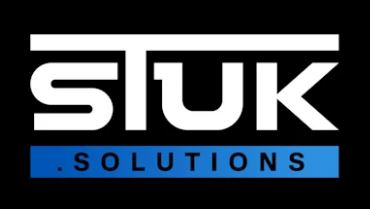
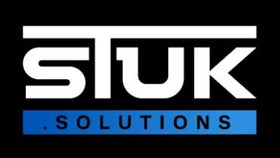
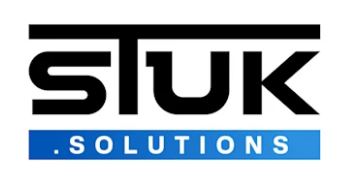
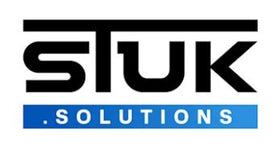
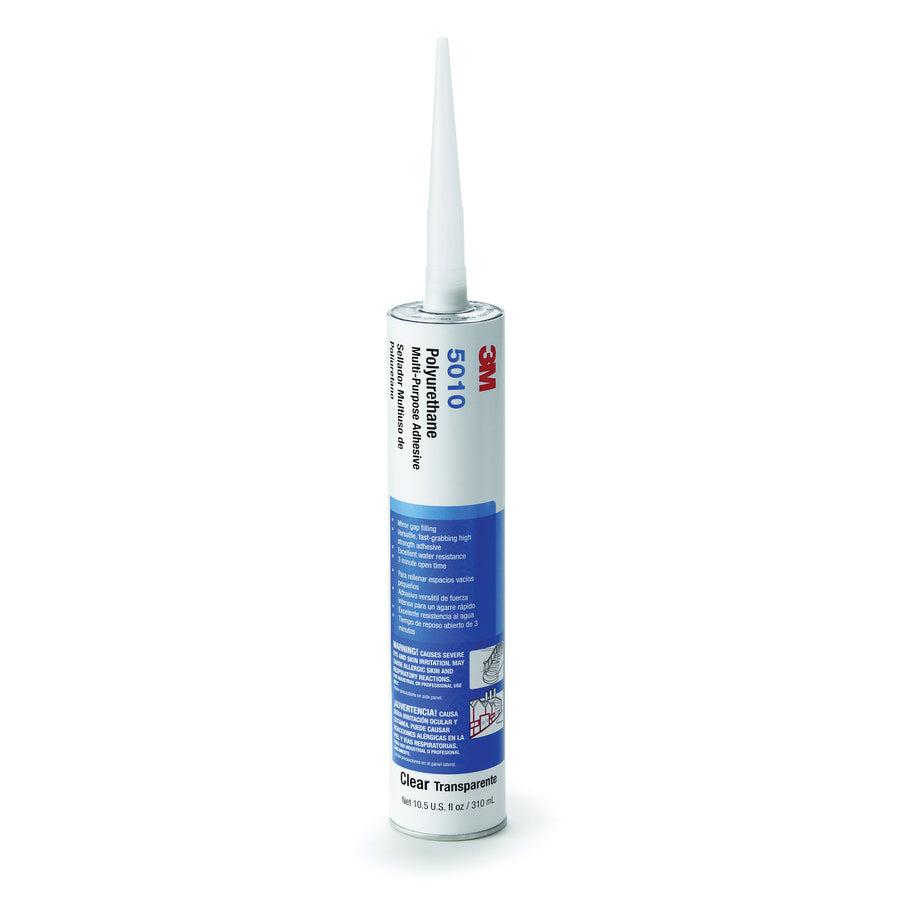
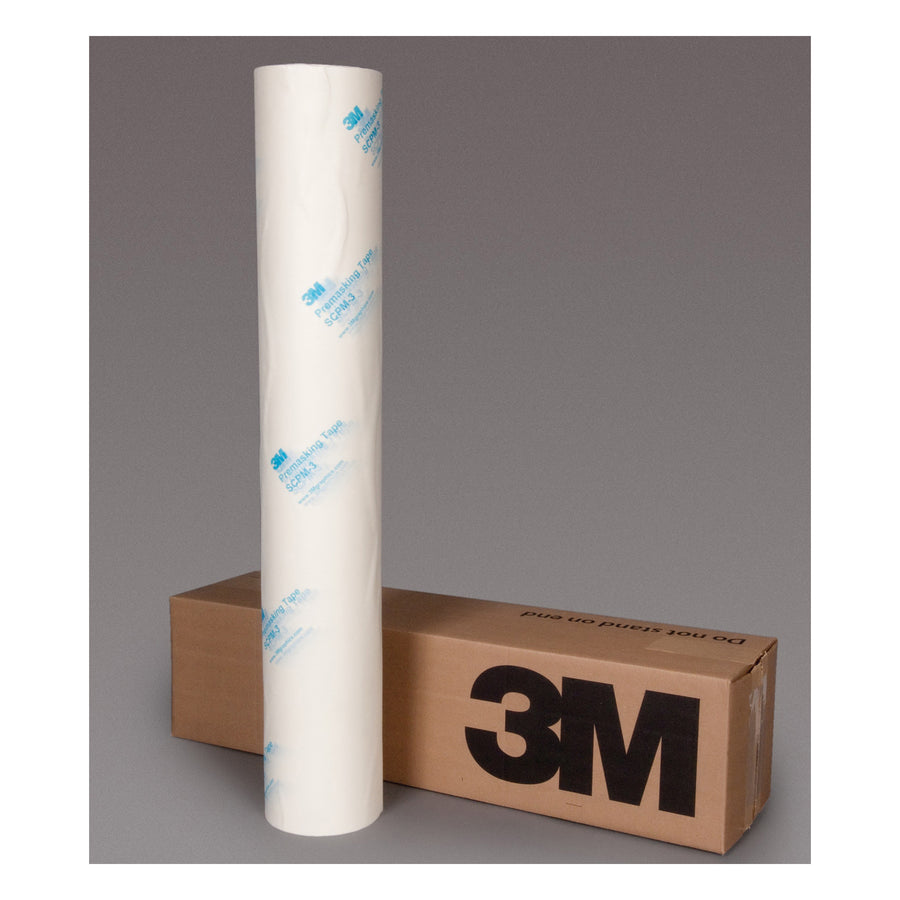
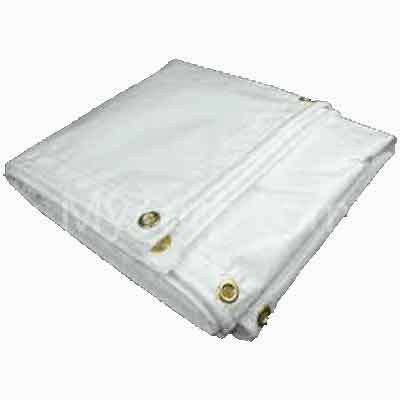
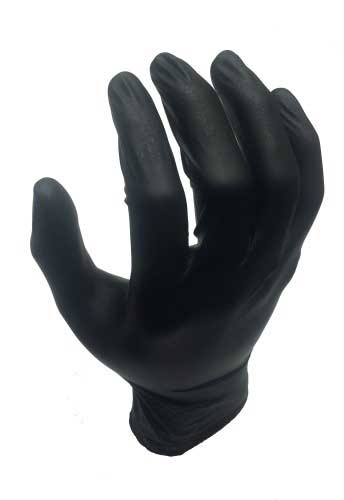

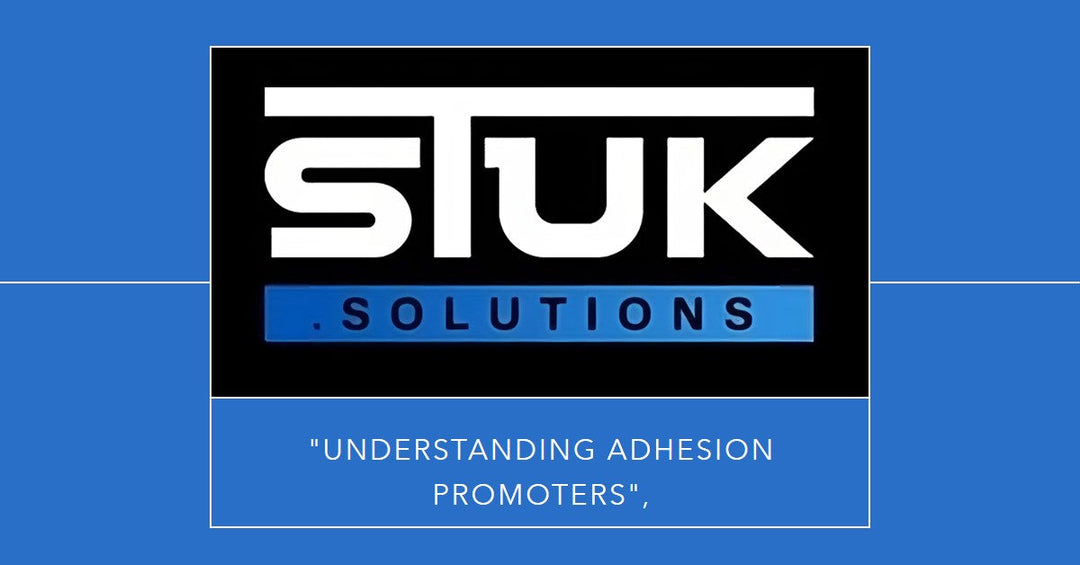

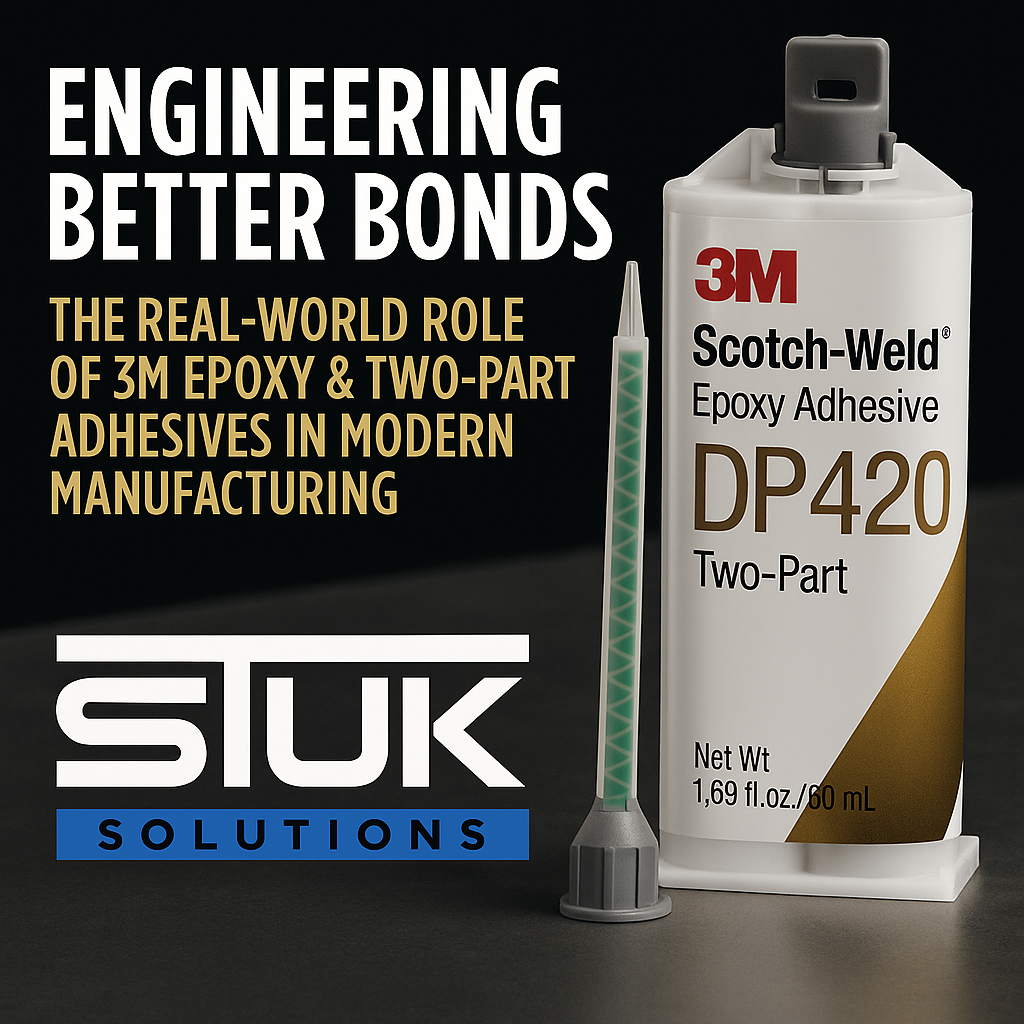
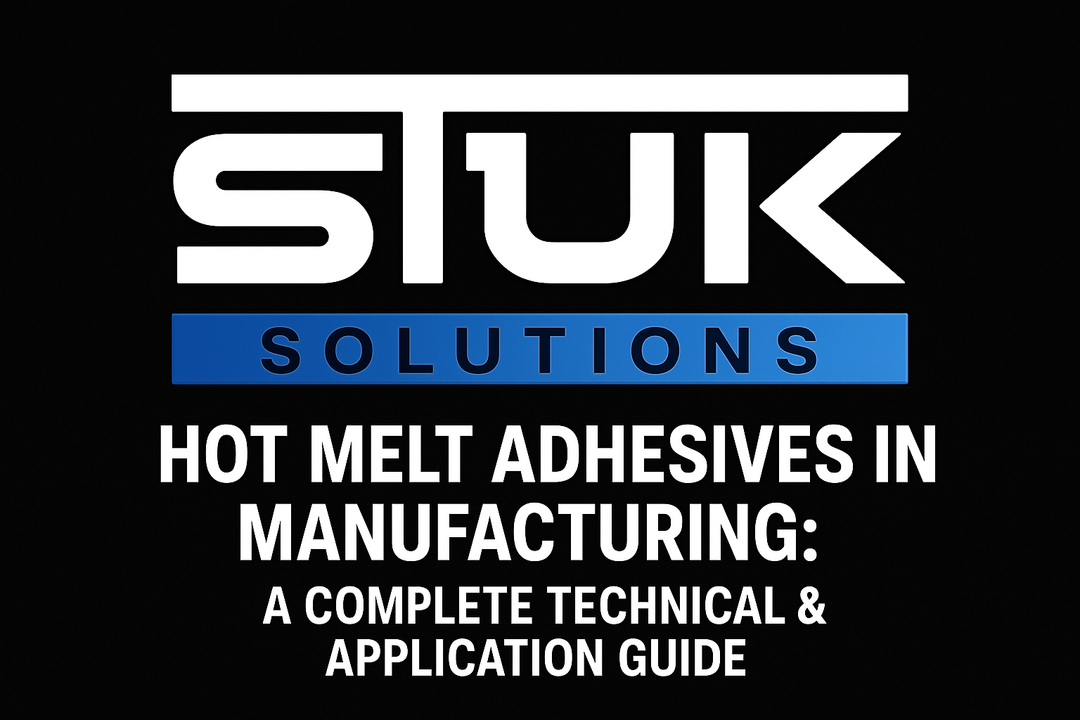
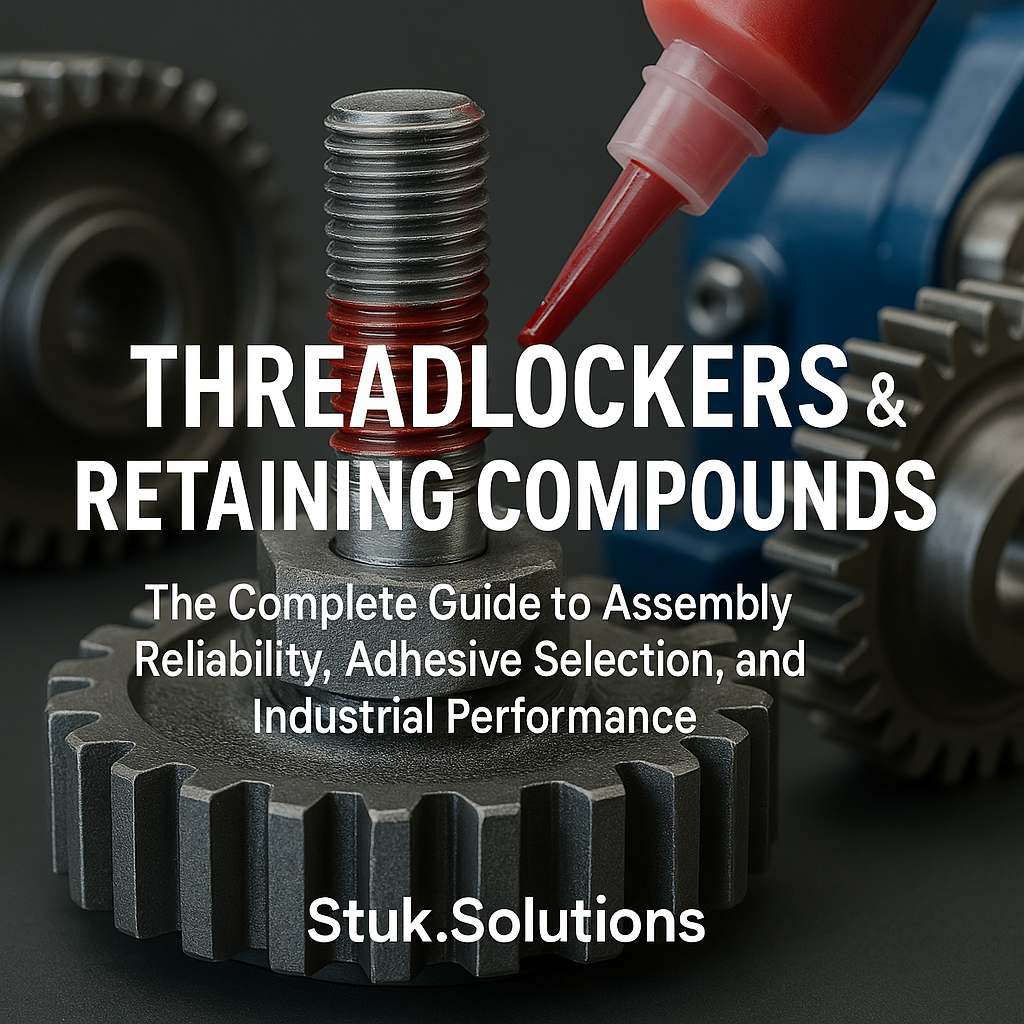
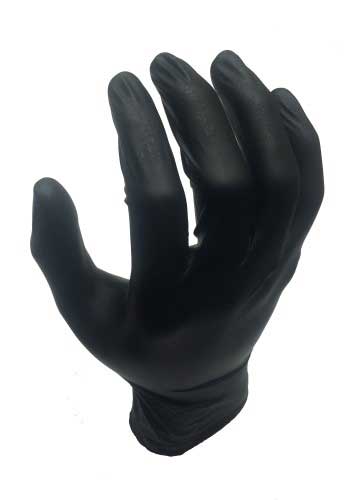
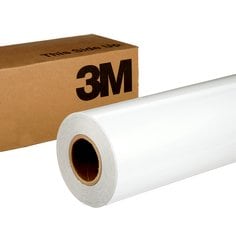
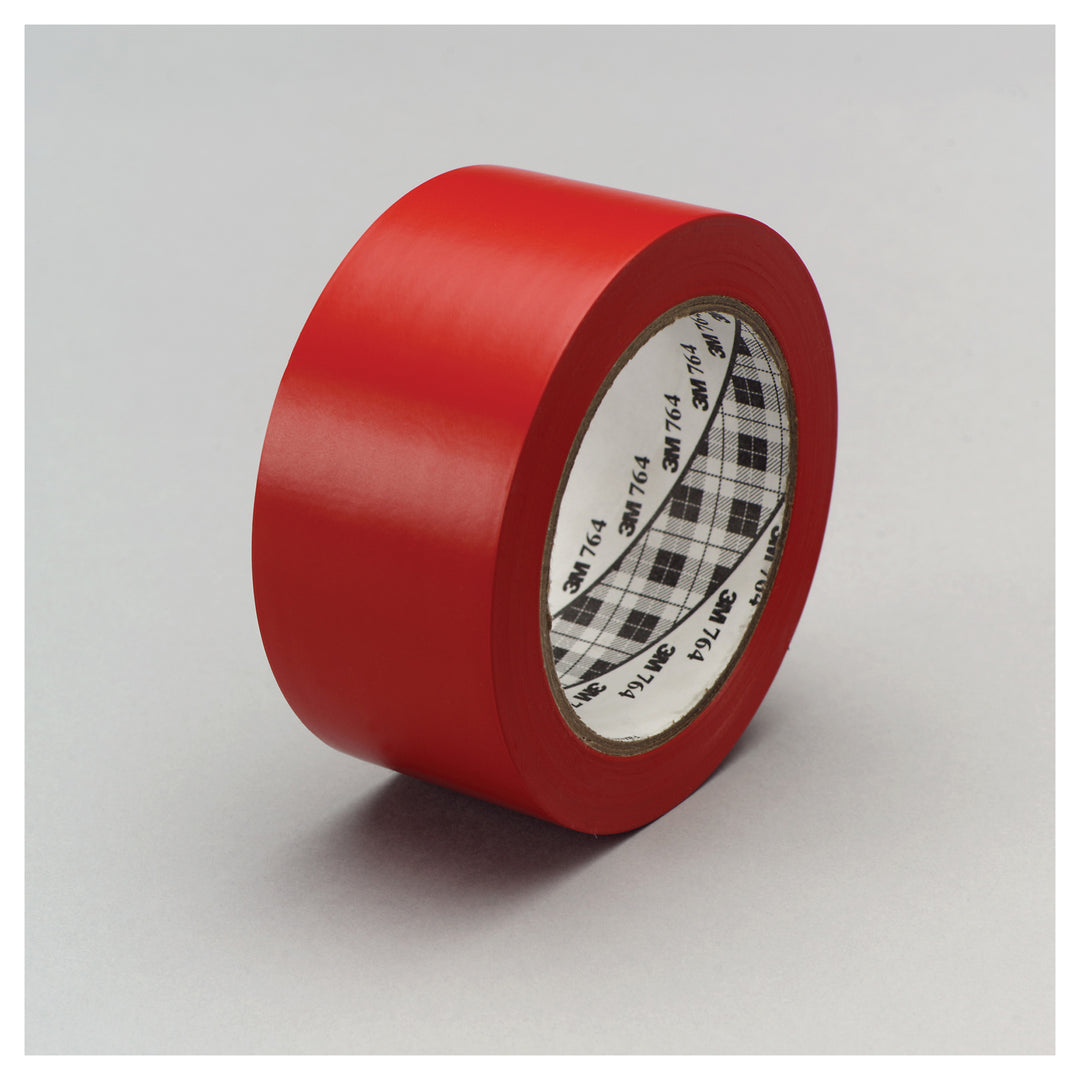
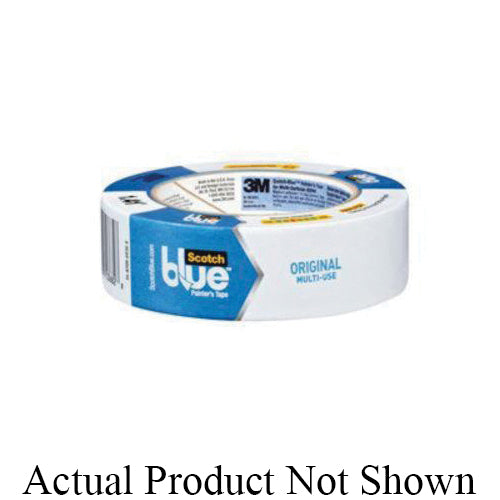
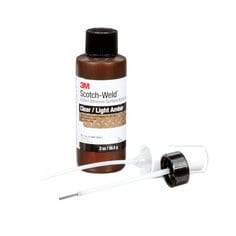
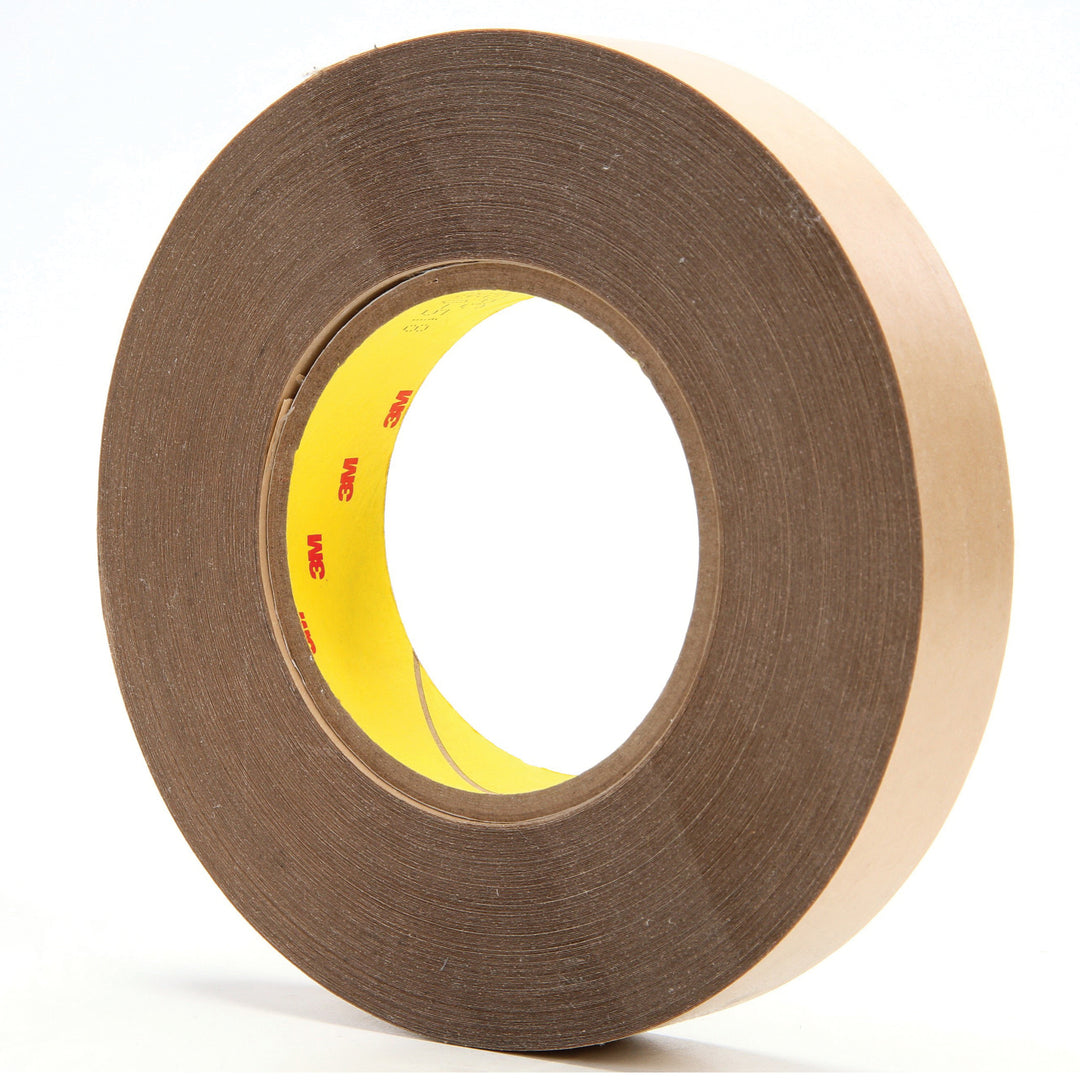
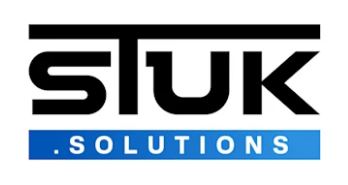
Leave a comment